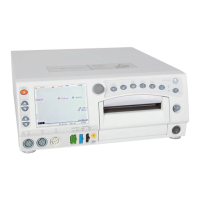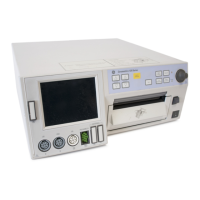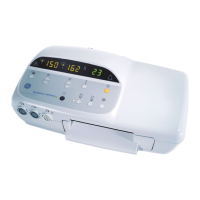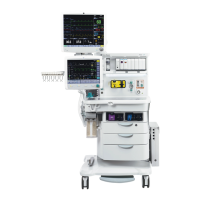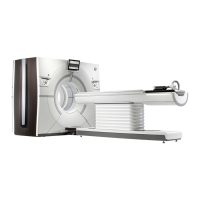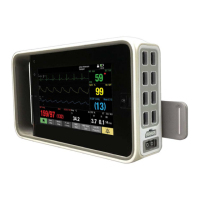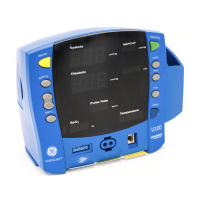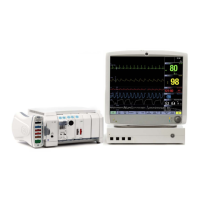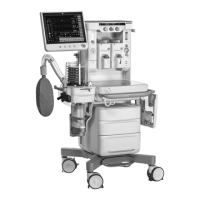Revision C 250cx Series Maternal/Fetal Monitor 9-7
2036946-001
Maternal Pulse Oximetry Monitoring: MSpO2 Technology
With traditional alarm management, upper and lower alarm limits are set for
monitoring oxygen saturation. During monitoring, as soon as an alarm limit is
violated by as little as one percentage point, an audible alarm immediately sounds.
When the SpO
2
level fluctuates near an alarm limit, the alarm sounds each time the
limit is violated.
Such frequent alarms can be distracting. With the SatSeconds technique, upper and
lower alarm limits are set in the same way as with traditional alarm management.
The clinician also sets a SatSeconds limit that allows the monitoring of SpO
2
below
the selected low alarm limit and SpO
2
above the selected high alarm limit for a
period of time before an audible alarm sounds.
The SatSeconds limit controls the time that the SpO
2
level may fall outside the alarm
before an audible alarm sounds.
The method of calculation is as follows:
The number of percentage points that the SpO
2
falls outside of the alarm limit is
multiplied by the number of seconds that the SpO
2
level remains outside that limit.
This can be stated as an equation:
Points x Seconds = SatSeconds
Where:
Points = SpO
2
percentage points outside of the limit
Seconds = number of seconds the SpO
2
remains at that point outside
of the limit
The alarm response time, assuming a SatSeconds limit set at 50 and a lower alarm
limit set at 90, is described and illustrated below.
In this example, the SpO
2
level drops to 88 (2 points) and remains there for a period
of 2 seconds (2 points x 2 seconds = 4 SatSeconds).
The SpO
2
then drops to 86 for 3 seconds and then to 84 for 6 seconds. The resulting
SatSeconds are:
SatSeconds Calculation
SpO
2
Seconds SatSeconds
2X 2= 4
4X 3= 12
6X 6= 36
Total SatSeconds = 11 52

